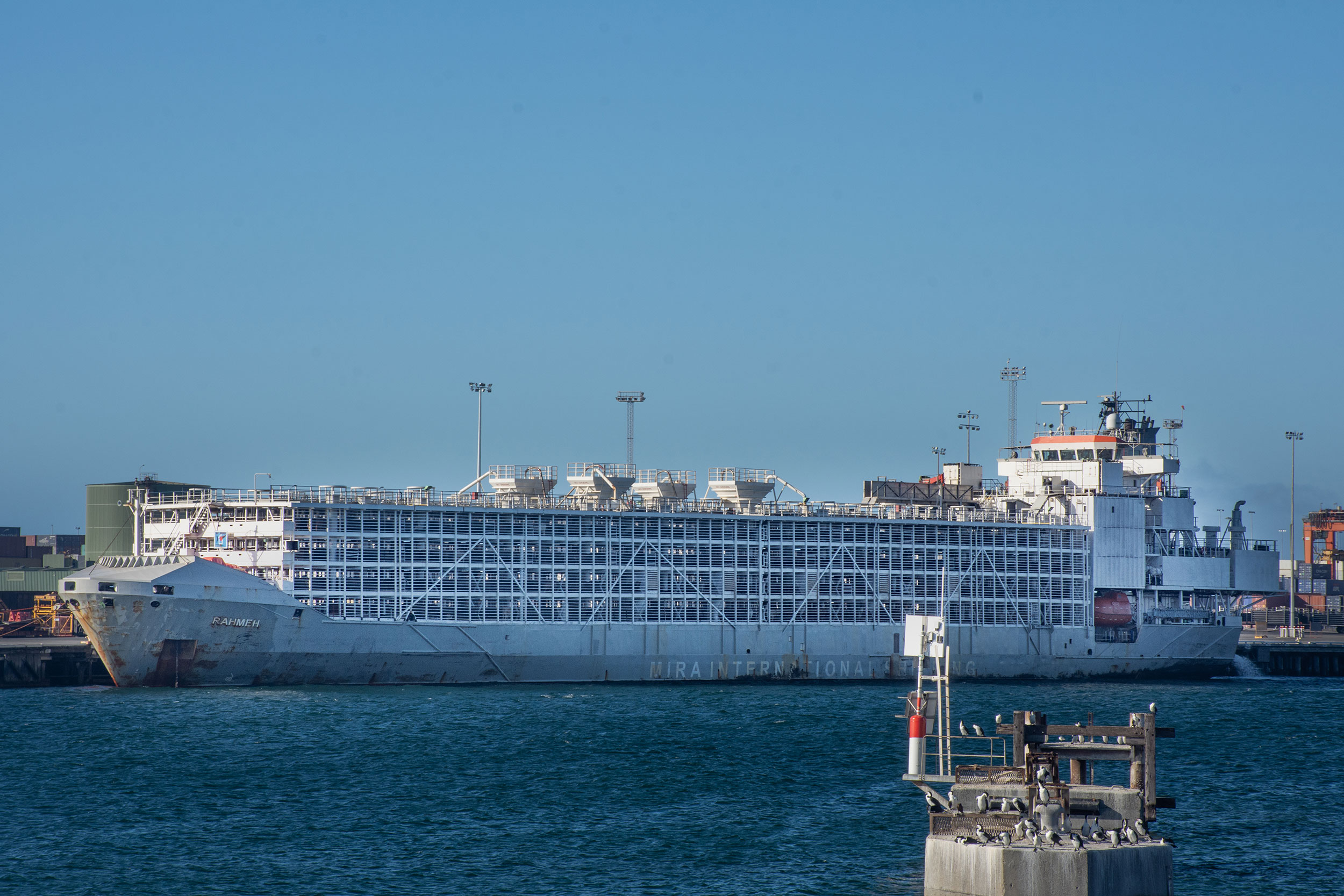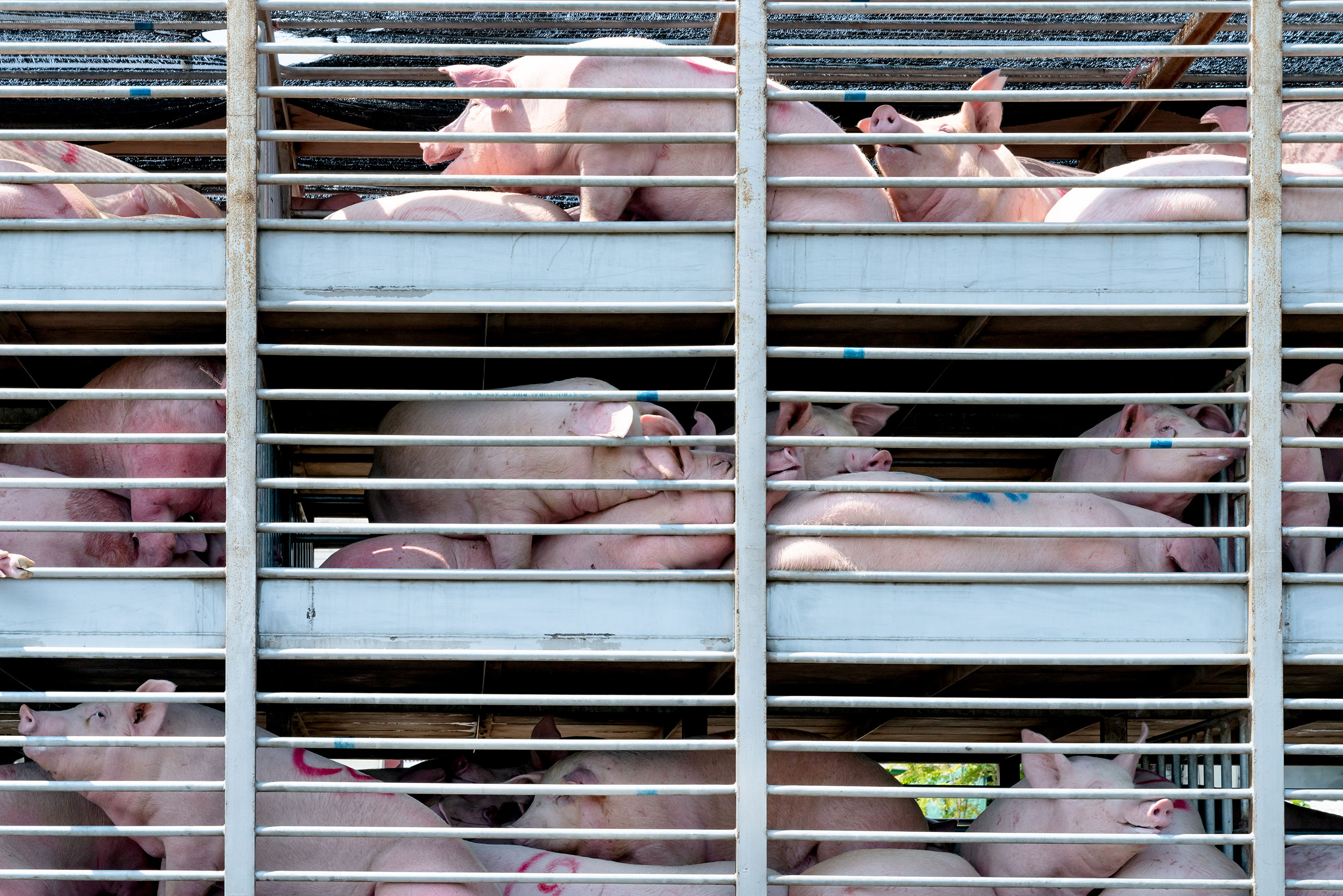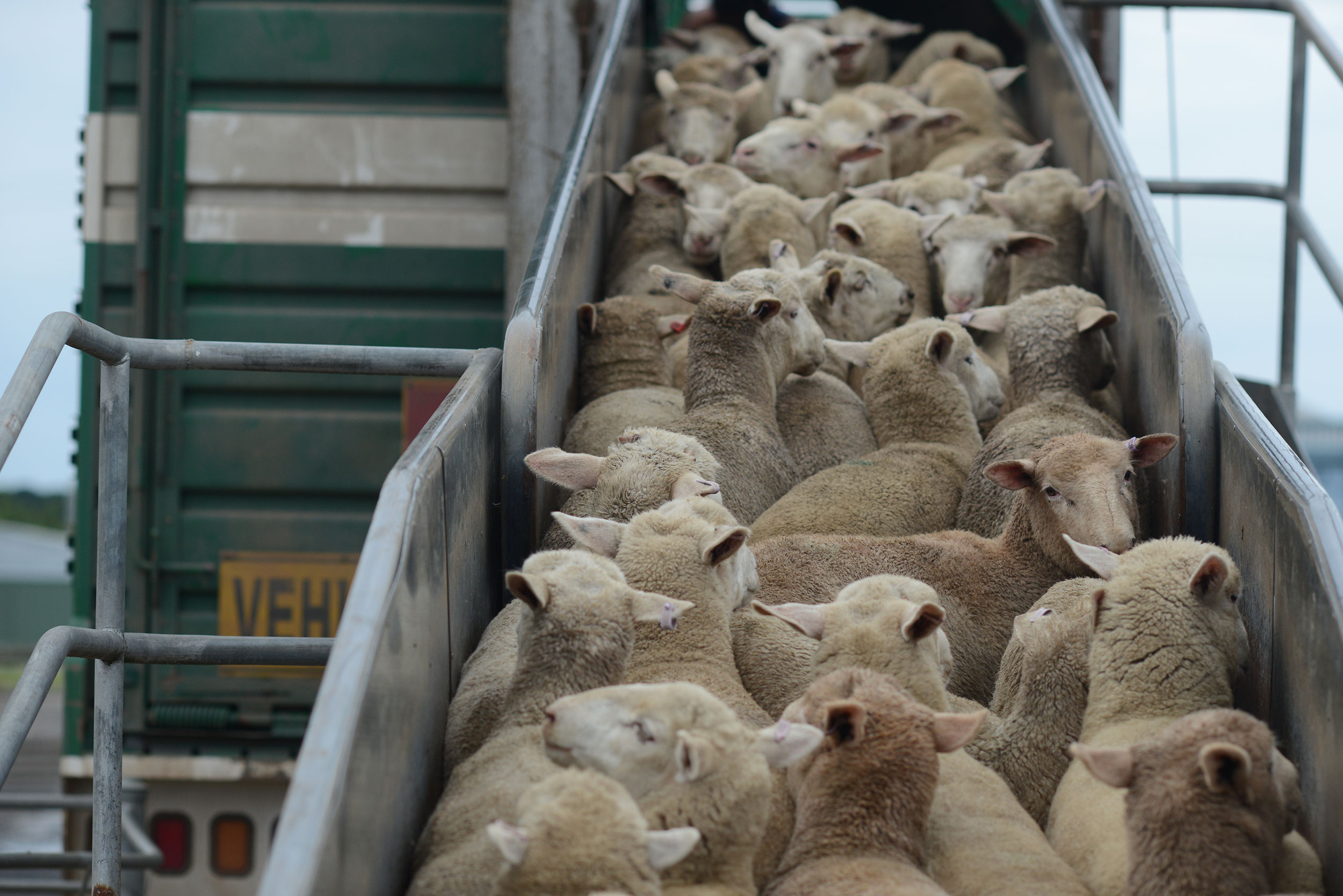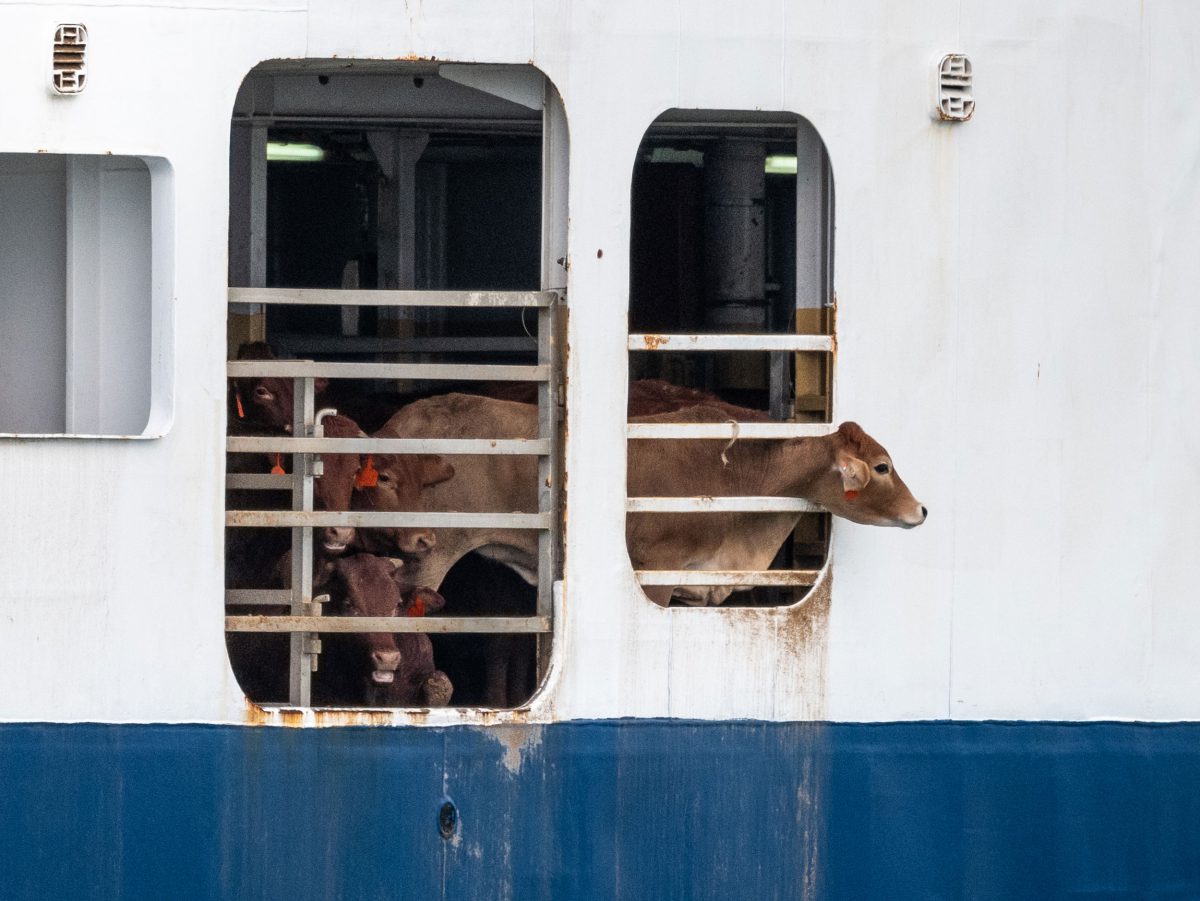
Live Export
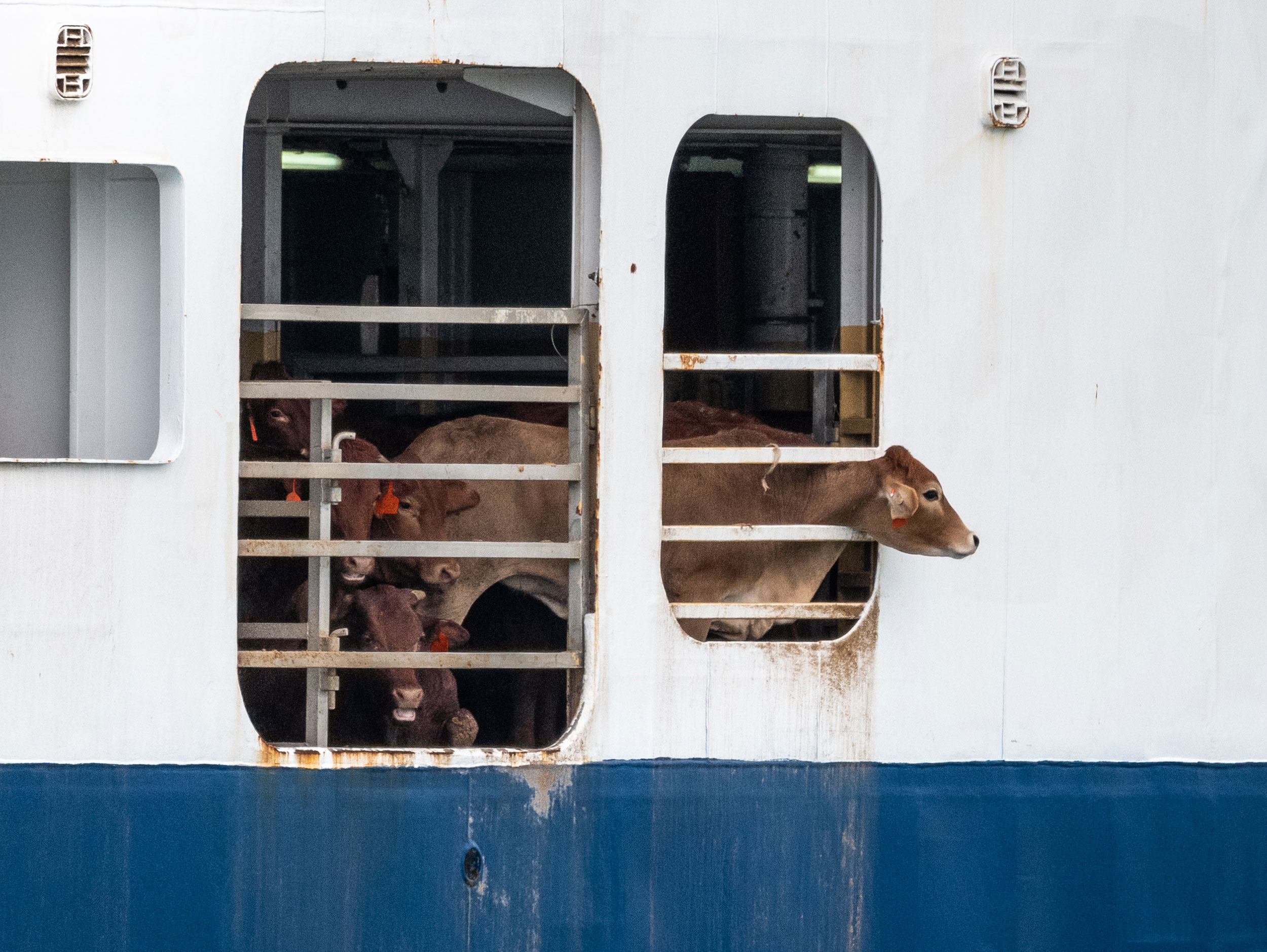
Each year, millions of live animals are transported thousands of miles for the purpose of slaughter or breeding. The animals endure long arduous journeys that often take days, weeks or even longer on trucks and/or ships. The journeys are brutal, and often involve long truck rides to ports where they are loaded onto massive ships. Some of the ships can hold up to 75,000 sheep or 20,000 cattle. The animals are live exported to countries that lack a large enough population of a particular farm animal, or to meet the demand for fresh meat. Many animals travel for a month, only to end up having their throats cut by a halal butcher while fully conscious. They are often shipped to countries that have little or no animal welfare regulations.
Aboard the overcrowded ships the animals often don’t have enough space to move or lie down. The ships can be so crowded that the animals cannot make it to the food or water troughs. Many do not eat, drink or sleep regardless, as they are not used to being on moving ships on the rough open ocean, and are extremely confused and disoriented. The temperature ranges the animals must endure on these voyages can be extreme. They are forced to stand in their own urine and feces. As a result they are exposed to high concentrations of ammonia gas, which irritates their eyes, nasal cavities and respiratory tracts. Thousands of animals typically die on these trips, and many are seriously injured. These ships can easily spread disease, as they are transporting animals in unsanitary conditions across the globe.
Aboard the overcrowded ships the animals often don’t have enough space to move or lie down. The ships can be so crowded that the animals cannot make it to the food or water troughs.
Legal protections for these animals are very limited, and many are subjected to horrific abuse both during transport and at the time of slaughter. The World Organization for Animal Health (OIE) is the agency that is responsible for setting standards and rules for import and export, but there is virtually no enforcement and violators are rarely held accountable. Upon arriving at their destination there is a continued lack of oversight. Inhumane slaughter is a huge issue as many countries use indescribably horrific methods, often while the animals are fully conscious.
There have also been many accidents with tragic results. In August 1996 a ship on route from Australia to Jordan caught fire and was abandoned before disappearing into the Indian Ocean. The fire killed 67,488 sheep, who either burned or drowned. In November of 2019, the Queen Hind capsized in the Romanian port of Midia, shortly after sailing out on route to Saudi Arabia. The half sunken boat trapped and killed over 14,000 sheep. Only 180 survived the disaster. In September of 2020, the massive cargo ship, Gulf Livestock 1, overturned off the coast of Japan during powerful typhoon and has still not been recovered. All 5,800 cattle on board died, as well as approximately 40 crew members.
Despite all of this the live export industry is exploding. It has quadrupled in size in the last 50 years, with millions of pigs, sheep, cattle, goats, poultry, alpacas, horses and camels being shipped around the world each year. The animals in the live export trade usually originate from factory farms in North and South America, Australia and Europe and then shipped to countries in the Middle East, North Africa and Asia. The import market in the Middle East is booming, due in part to increased demand, and water shortages that limit local production. Denmark, the Netherlands, Canada and Germany are the biggest exporters of live pigs. Australia, France, Mexico and Canada are the largest exporters of live cattle. Sudan, Romania, Somalia and Australia are the biggest exporters of live sheep. Interestingly the United States is the single largest importer of animals in the world, with the vast majority made up of pigs from Canada or cattle from Mexico.
Live export is dangerous, inhumane and cruel. It must be banned.
